I would like to use a generic doorknob that's installed in a typical wooden exterior door as a capacitive touch sensor. I have found various references for the circuit, but I have some questions about the sensor itself.
First, the doorknob in question seems to be non-ferrous (as a magnet doesn't stick to it), but it's still conductive. The "back-plate" that the doorknob rotates in is ferrous (and conductive also).
The image below shows the two options I am considering for fashioning the sensor foil. The option that I am most confident will work without interference from the doorknob itself is a copper ring that surrounds the backplate of the doorknob, but doesn't touch it anywhere. The obvious drawback is this will require some visible modifications to the surface of the door.
The cosmetically preferable option would be to conceal the copper sensor foil beneath / behind the backplate of the doorknob, as in the illustration of the inner copper ring below. But will the sensor function there, with a plate of ferrous metal between it and the hand it is supposed to sense?

